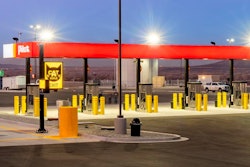The RPA platform has reduced the cost per order for PTG and brought visibility to work in process (WIP). Workers can see the status of all orders at any time of day. Before the technology, “we had no clue what orders were ahead or behind schedule,” Brajkovich says.
The automated bots have enabled PTG to go from 22 full-and part-time workers – touching every order during the lifecycle, from order entry through operations – to 15. Most of the job reductions were temporary staffers, he says.
Today, about 80% of the orders and documents that PTG receives from customers are automatically processed straight through — sending customs invoices to border agencies to obtain clearance.
The company is able to clear WIP in the system up to four hours earlier every day and process orders at an accuracy rate of 99.9%. As a result, freight is getting cleared through customs faster, and “at the end of the day, we are not holding up trucks or shipments,” Brajkovich says.
Lucy Lewis, director of customer care, has seen the transformation in order entry. Prior to using the RPA technology, orders came in by phone, email or electronic data interchange (EDI) and were funneled to a single office worker who printed them out and distributed them to a team for manual entry into the company’s enterprise resource planning (ERP) system.
Workers had to validate the items they would input, such as addresses, cities and postal codes. Most orders arrive between 11 a.m. and 2 p.m., and during that period, the order entry team “had a huge bottleneck,” Lewis says. “We had to get assistance from other departments during the peak time to help us get through the backlog.”
Today, the bots do the validation and data entry process for orders as quickly as they arrive from email, the website, EDI or application programming interfaces (APIs). Rather than process data, the order entry team now is focused on quality and managing exceptions, Lewis says.










